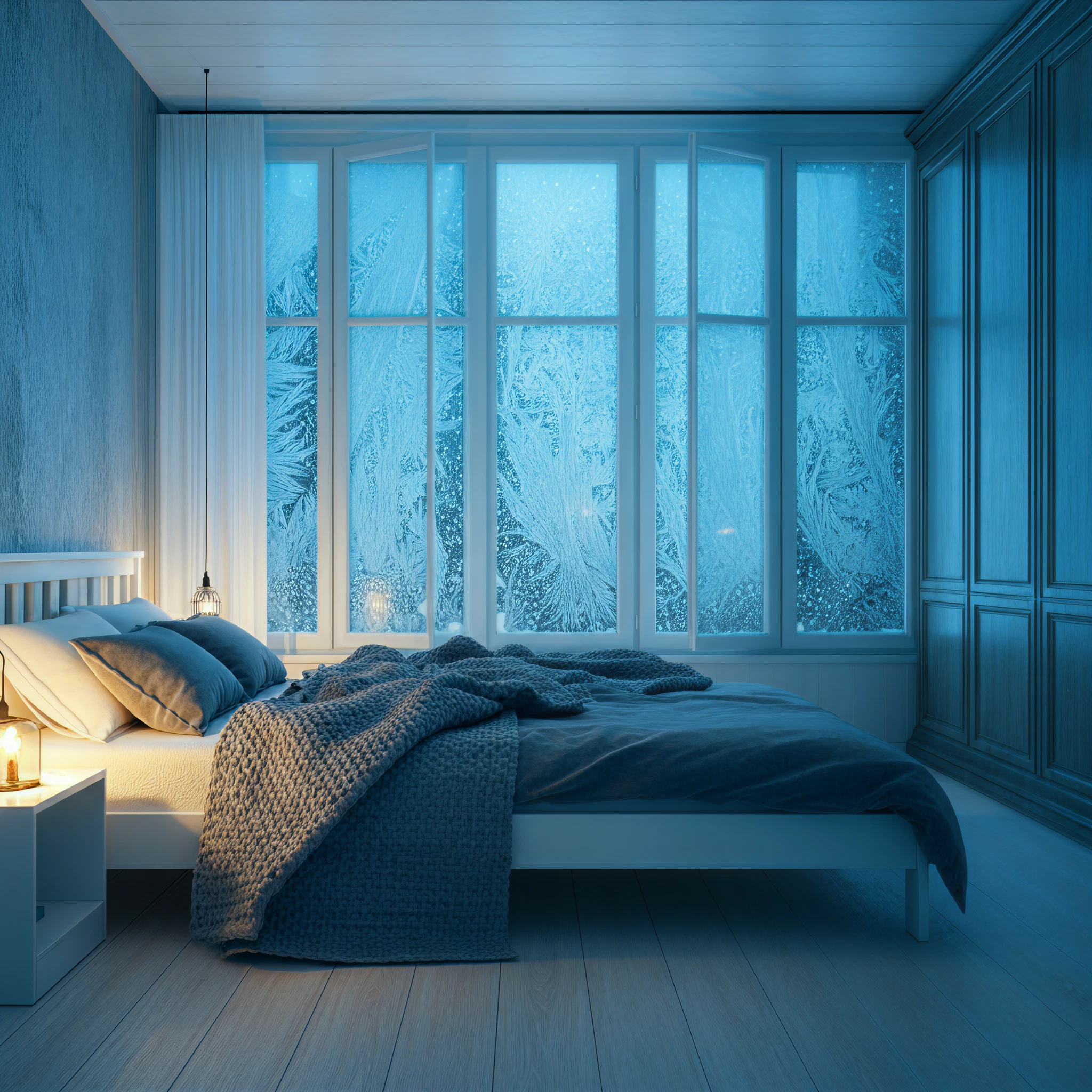Do you sometimes find yourself tossing and turning in bed, unable to drift off? Or perhaps waking up throughout the night feeling hot and sticky? If this sounds familiar, adjusting the temperature of your room might be the easiest and most effective solution. Studies have shown that sleeping in a cold room not only improves sleep quality but also benefits your overall health.
If you’re intrigued, read on to discover how a slightly cooler bedroom can help you elevate your sleep and well-being.
What is the Ideal Temperature for Sleeping?
For optimal sleep quality, experts recommend keeping your room between 60-67 degrees Fahrenheit (15.6-19.4 degrees Celsius). This temperature range is perfect for aligning your body’s natural sleep processes, including a drop in core temperature, melatonin production, and restorative stages of sleep.
But why exactly does sleeping in a cooler environment matter? Here’s a closer look at the benefits.
1. Promotes Better Sleep Quality
Did you know that your body temperature naturally drops as you prepare for sleep? This is a signal for your body to produce melatonin, the hormone that promotes restful sleep. A warm room can interfere with this process, making it harder to fall asleep. Conversely, cooler temperatures help you enter deep, restorative sleep faster.
The Science:
Sleeping in a hot room can leave you restless, while a cooler environment can trigger a sense of relaxation, making it easier to stay asleep through the night.
2. Helps You Fall Asleep Faster
If you’ve struggled with insomnia or taken longer to fall asleep than you’d like, a cold room might help. When your room is colder, your body receives stronger signals that it’s time to sleep.
✴️ Pro Tip: If you find it hard to adjust to a cold room, start by creating a cozy foundation with breathable blankets and then gradually lower the thermostat.
3. Reduces Night Sweats and Hot Flashes
Night sweats, whether due to menopause or other health conditions, can significantly disrupt your sleep. By lowering the room temperature, you can reduce sweating, stay comfortable, and enjoy a more consistent night’s rest.
This small change can bring about big improvements for anyone experiencing hormonal fluctuations that lead to disrupted sleep.
4. Supports Metabolism and Fat Loss
Sleeping in a cooler environment encourages your body to burn brown fat. What’s brown fat, you ask? Often referred to as “good fat,” brown fat generates heat by burning calories. This process not only keeps you warm but can also boost your metabolism over time.
Did You Know? A study found that people sleeping in colder environments actually burned more calories and were able to improve their insulin sensitivity, which reduces the risk of Type 2 diabetes.
5. Boosts Melatonin Production
Melatonin isn’t just a sleep hormone. It’s also a powerful antioxidant that has anti-aging properties. Sleeping in a cold room helps your body’s melatonin production, which can lead to healthier skin, improved immune function, and even better mood regulation.
6. Enhances Mood
Ever slept in a chilly room and woken up feeling refreshed and energized? There’s a scientific reason for that. Cooler rooms can increase serotonin levels (linked to happiness), leaving you feeling more positive and motivated to tackle your day.
Downsides of Sleeping in a Cold Room
Of course, sleeping in a cold room isn’t ideal for everyone. Some potential downsides include:
- For individuals with underlying health conditions, like asthma or COPD, colder air might irritate the lungs.
- Extremely cold temperatures can sometimes weaken your immune response to colds and flu.
- Feeling too cold can disrupt sleep, particularly for those who are sensitive to changes in temperature.
✳️ Solution: Strike a balance. Stick to the recommended 60-67°F range instead of dropping the temperature too low.
Quick Tips to Stay Comfortable in a Cool Room
Switching to a colder sleeping environment doesn’t mean sacrificing comfort. Here are some tips to enjoy the benefits while staying cozy:
- Upgrade Your Bedding: Use breathable fabrics like cotton or linen to promote airflow and reduce overheating.
- Choose a Cooling Mattress: Opt for mattresses designed to regulate your body temperature.
- Set the Perfect Thermostat: Avoid fluctuating room temperatures by maintaining a steady setting within the ideal range.
- Create a Routine: Take a warm shower before bed to relax and contrast with the cooler room temp.
Final Thoughts on the Benefits of Sleeping in a Cold Room
Quality sleep is essential for your overall health, and sleeping in a cold room may be one of the simplest hacks to achieve it. From promoting better rest and improving metabolism to enhancing your mood and aiding anti-aging processes, the benefits are too good to ignore.
Just remember, balance is key. If you’re not sure how your body will react to a colder sleeping environment, start small and adjust gradually until you find what works best for you.
Need help optimizing your sleep habits? Stay tuned for more tips, or share your experiences in the comments!
Keyword Highlights for SEO:
- Benefits of sleeping in a cold room
- Improved sleep quality
- Metabolism boost
- Melatonin production
Would you like visuals for this piece? Please specify where needed, and I’d be happy to assist!








